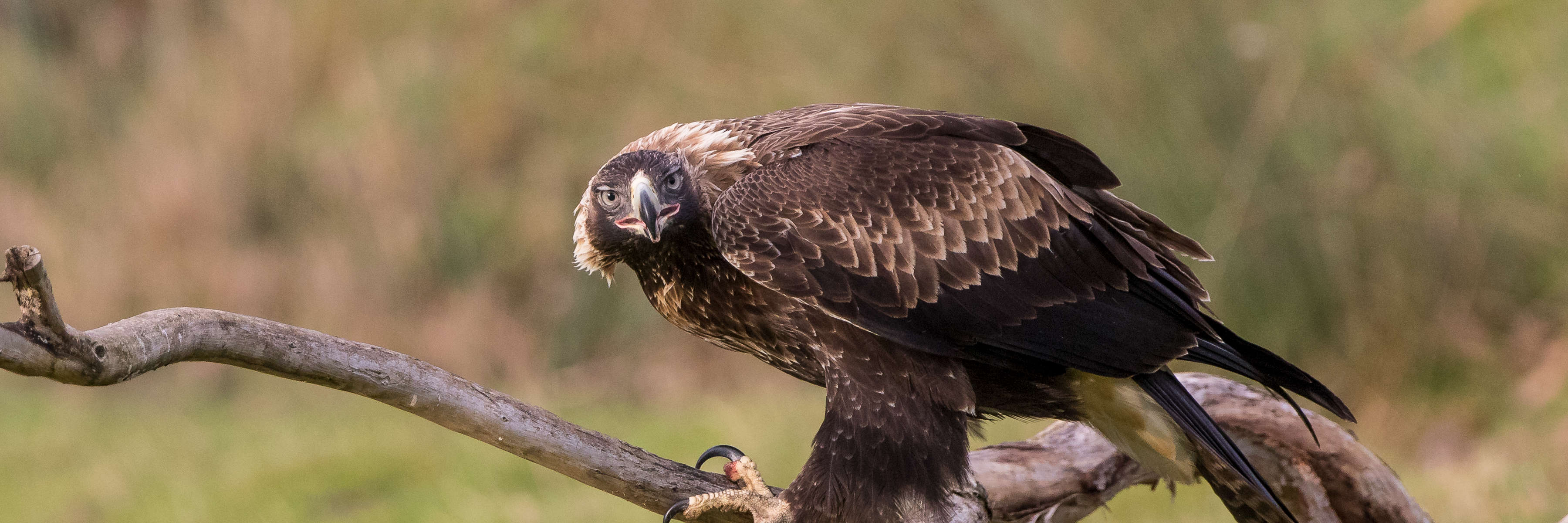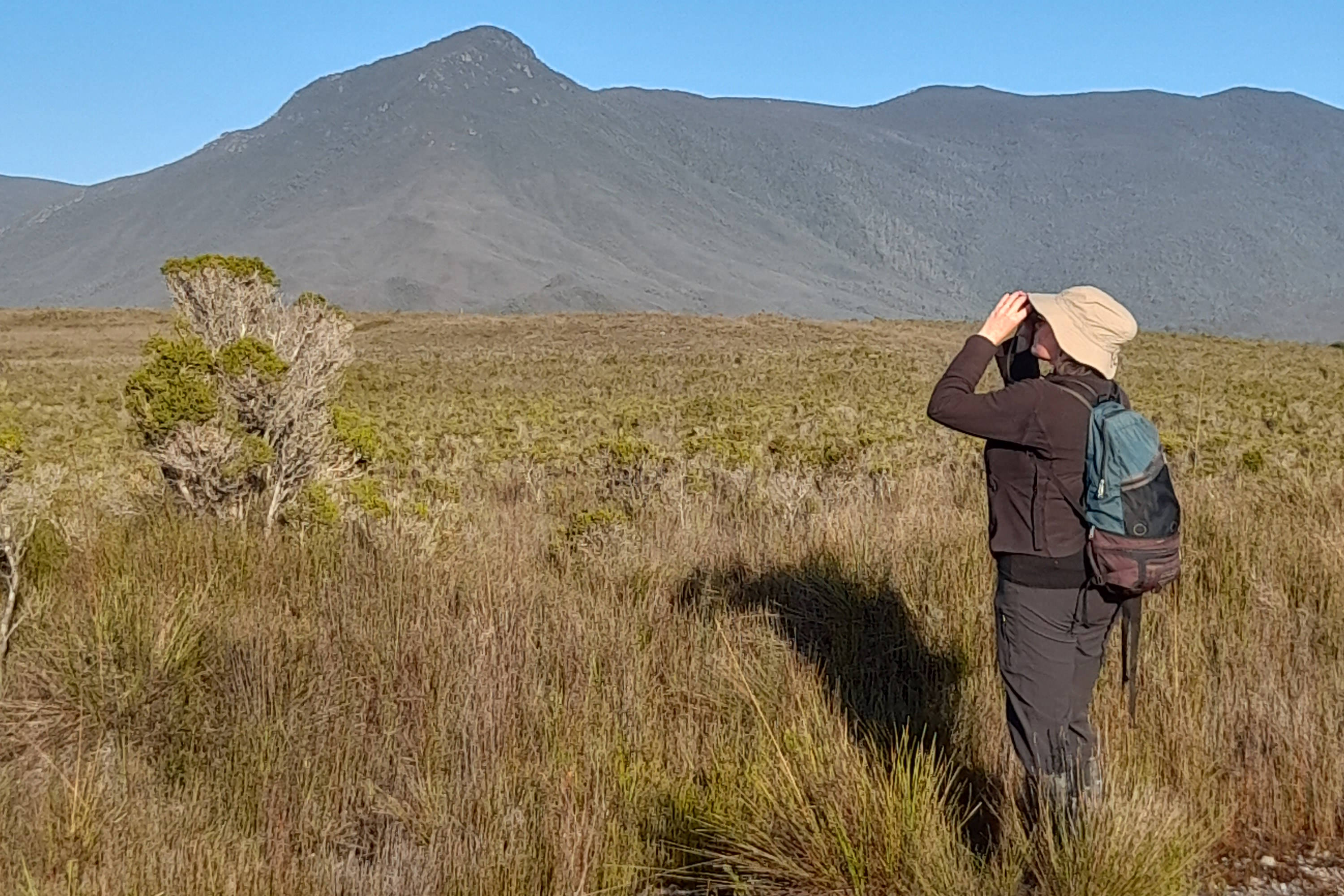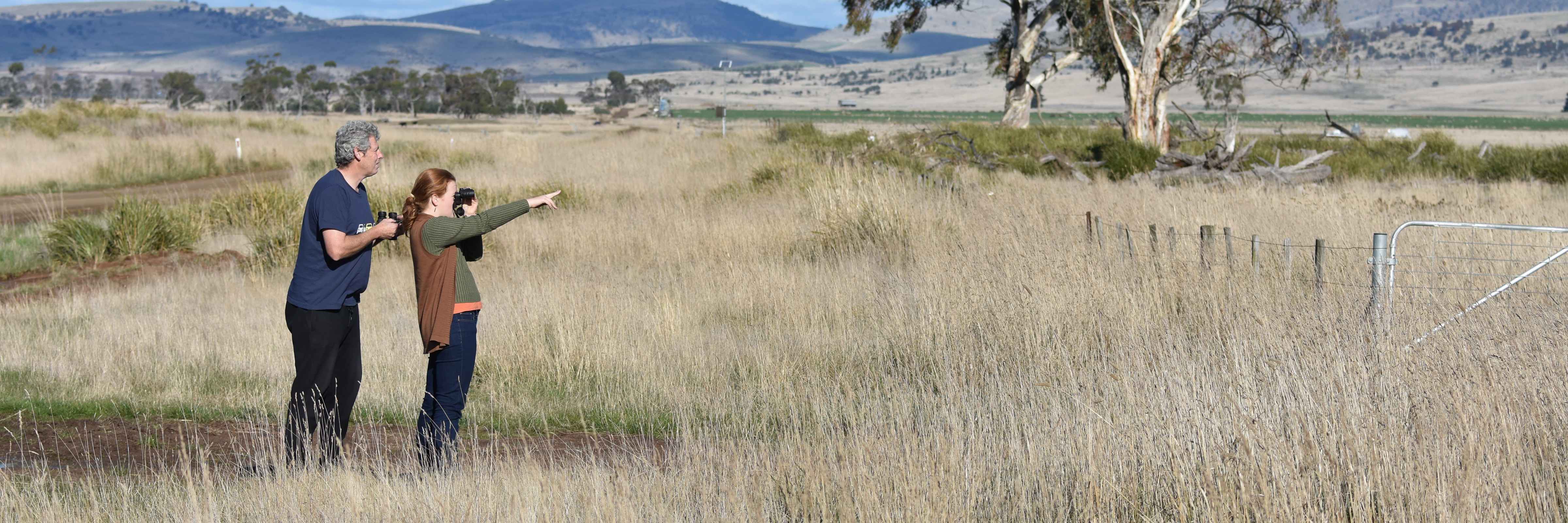Six years of Where? Where? Wedgie! survey data — congratulations everyone! With the 2023 and 2024 results for Tasmanian wedge-tailed eagles now analysed by Jo the statistician (aka Dr Joanne Potts of The Analytical Edge, we have consistent survey data for each year since 2019.
We’re increasingly able to answer one of the two key questions essential for assessing a species’ conservation status: what’s the direction and rate of change in population size? This information drives formal decisions around conservation actions, from local to international levels, and helps check if we’re doing enough to prevent declines and extinctions.
Index of Tasmanian wedge-tailed eagle abundance
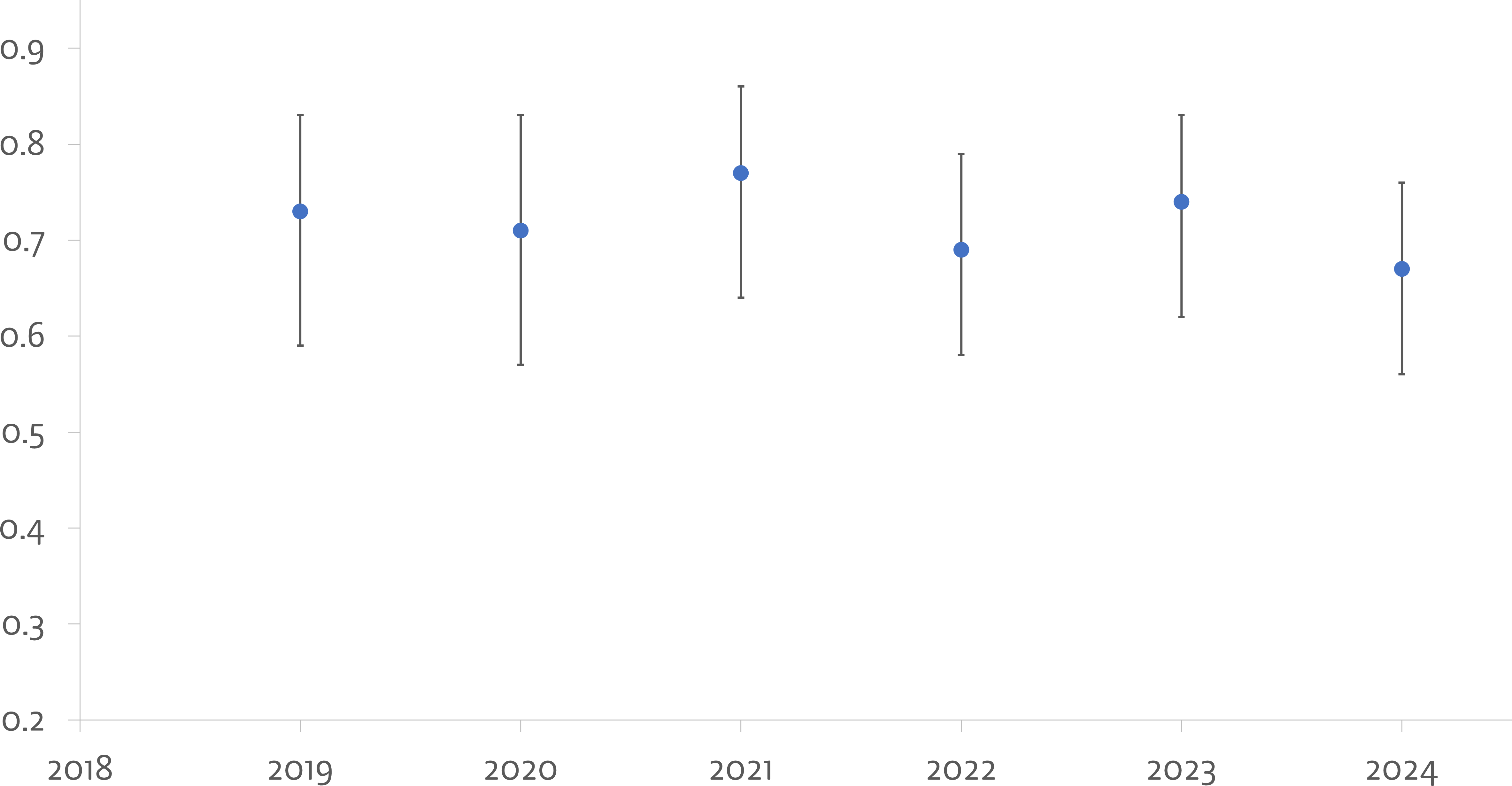
From the graph, we can see that the Tasmanian wedge-tailed eagle population is fairly stable. There’s overlap between all the confidence intervals, indicating no major change in population size over the six years. For a full answer covering highs and lows affecting any population size, data across at least 10 years is required (more especially for a longer-lived species like an eagle), but we’re on our way to a clear picture.
It’s extra-exciting to achieve this success through Where? Where? Wedgie! as our surveys take an unusual approach. In many countries, volunteers monitor threatened raptors by observing their breeding success in nests. This method is very informative, but challenging to achieve in Tasmania: nesting eagles can be disturbed by observers over 1 km away; they may choose to breed in one of several nests in their territory, which are often difficult to reach; and monitoring all territories reliably would be particularly challenging in our less populous state.
The Where? Where? Wedgie! surveys are simpler, but still gather the critical information on population trends for conservation assessments. We’re also accumulating data for less frequently recorded species. In the past, conclusions about raptor population trends had to involve a lot of guesswork.
What about the second essential question — regarding the actual population number? Newly-commenced PhD candidate Cheng Zhang will explore how to address this using our survey data. He’ll also investigate other analytical approaches for deriving additional, more accurate information from the data. More details soon…
So do we need to keep surveying? Unfortunately, we can’t relax, even with these signs of stability. While many issues for Tasmanian raptors are now being controlled, some may be increasing. Raptors face new challenges: high-toxicity rodenticides, avian flu, and climate change. If things change, it’s crucial that everyone is aware of the change, to support and guide adjustments to conservation efforts.
You can make an important difference! Do you have the WWW 2025 dates in your diary? The more numerous and evenly spread our surveys, the more accurately we can interpret results. Smaller confidence intervals on the graphs would allow us to pick up on significant population changes more quickly. While bookings have sometimes hit our target of 100 squares for 2+ days in a year, we’ve never quite managed to achieve that many surveys. Can we do it this year? Can we get more surveys out west and in the Midlands?
To help hit these targets, we have funding from Inspiring Tasmania to enable experienced people to act as ambassadors for the project. More on this soon, but feel free to get in touch if you’re curious about being an ambassador or hosting a workshop.
-
2019 – 78 squares surveyed for 2+ days
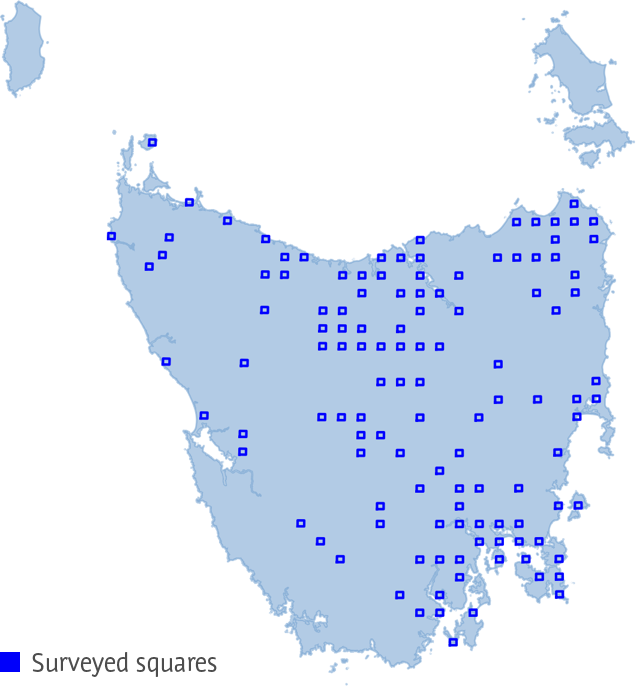
-
2020 – 90 squares surveyed for 2+ days
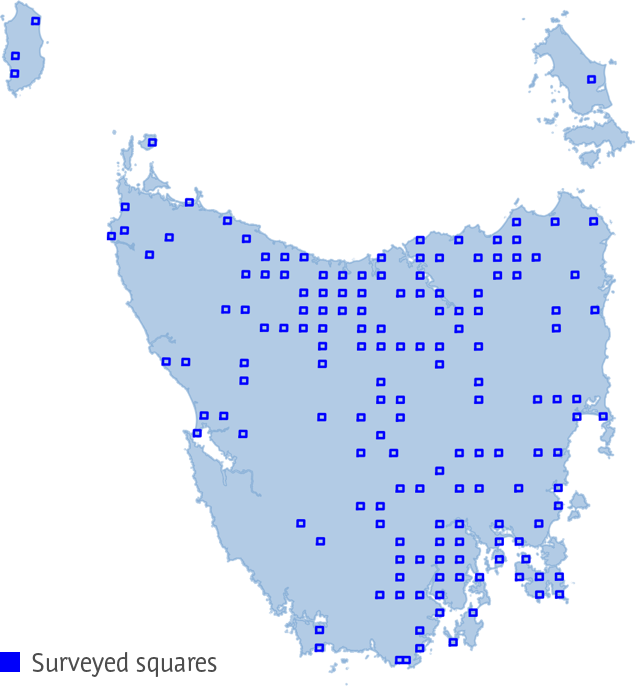
-
2021 – 90 squares surveyed for 2+ days
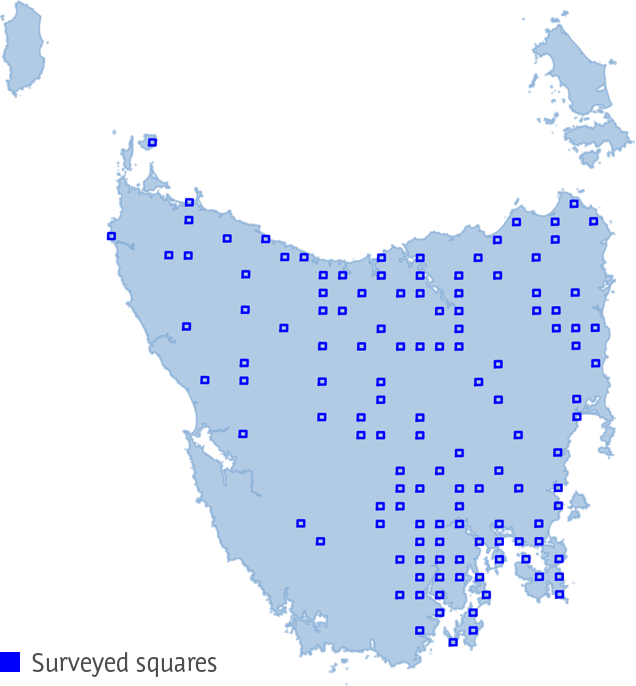
-
2022 – 87 squares surveyed for 2+ days
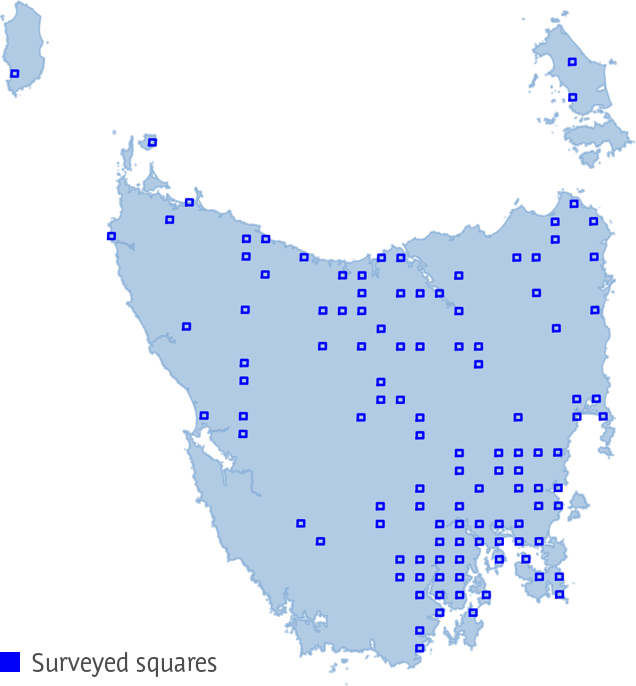
-
2023 – 81 squares surveyed for 2+ days
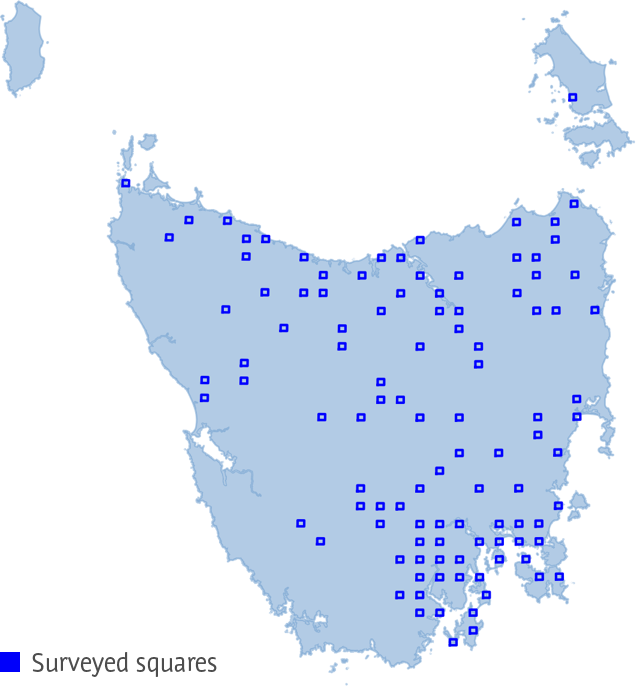
-
2024 – 90 squares surveyed for 2+ days
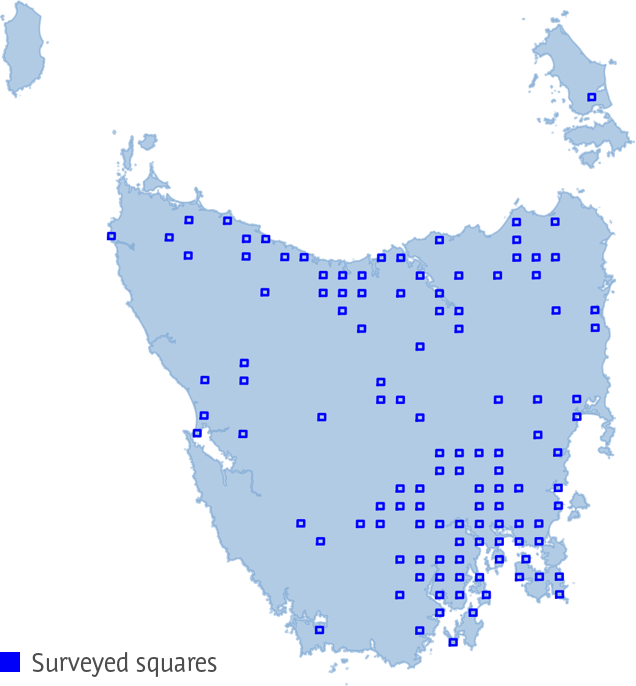
New to these surveys? Check out the details of the methods and how to take part.
Dates of surveys and any workshops will be posted in the events calendar.
Can’t take part this year, or want to do more? Consider a donation to help NatureTrackers keep going long term.
